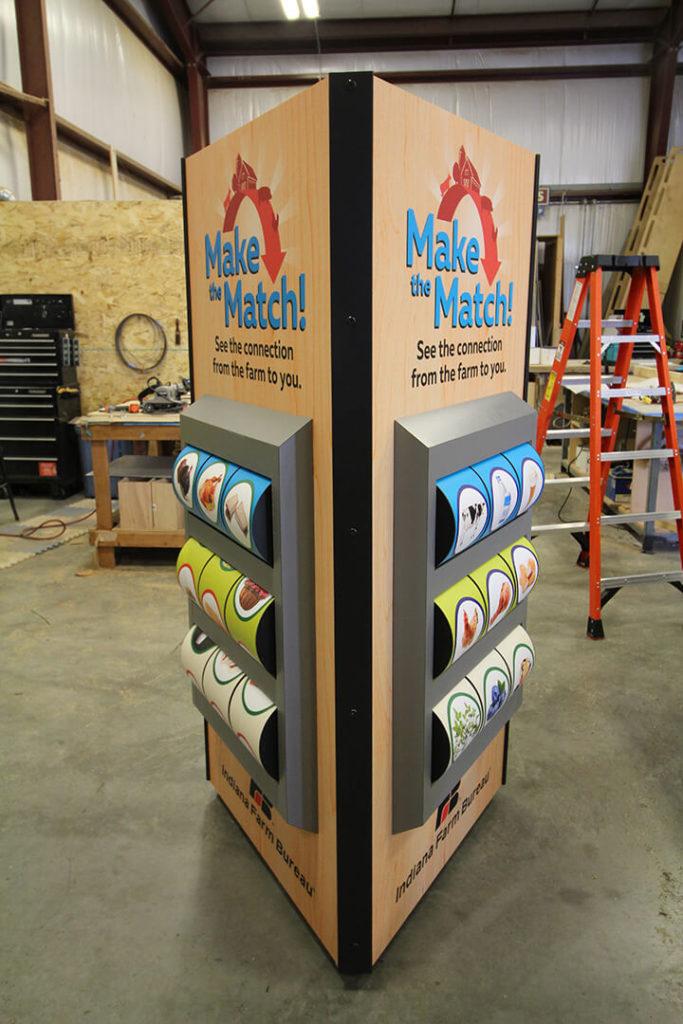
Take a look around you: how many objects in the room come from a farm? Unless you’re in your kitchen, you might think “none.” But think again. Do you have books or maybe pads of sticky notes nearby? Trees have to grow somewhere before they can be made into paper. Are you wearing clothes made from cotton or wool? Those are ag products.
We could keep going, but you probably get the point: the journey from farm to store involves a lot more products than just food. That’s what the Make the Match display is all about.
(You can find more photos of this agricultural exhibit in our online catalog.)
Three sides, three wheels…
We’ve written before about the problem of consumers not recognizing their connection to farming. It’s been the focus of a couple of our other displays, too, like the Soybean Life Cycle display. But for this display, our clients at Indiana Farm Bureau wanted to go all-out. Instead of concentrating just on one ag commodity and how it impacts daily life, they wanted to show the impact of a whole host of commodities. Twenty-seven, to be precise.
In order to do that, we built a display with three sides, and with three wheels in each side. Each wheel included three different commodities. Then, each wheel was subdivided into three independently-rotating segments. What’s the point of all those threes? They’re how folks get to learn about the surprising connections between a farm and products at the store.
The first segment of each wheel has photos of its ag commodities in their unprocessed form — for instance, a blueberry bush or a woolly sheep. The other two segments of the wheel show two photos (per commodity) of everyday products that use that commodity. So when you’ve lined the wheel up correctly, you can look at the photos from left to right and see first the ag commodity itself and then two common products made from it. You’ve made the match.

A Fallback Method
All very well and good, you might say, for something familiar like dairy. It doesn’t take too much ag knowledge to match the cow with the photos of milk and ice cream. But what about the duck, for instance? Many people may not even think of ducks as a farm animal. Knowing that eiderdown comes from ducks and then matching the eiderdown pillow and down-filled coat to the duck photo is a whole other challenge.
Well, for those situations, we have a backup. Each photo has a colored border, and the borders of the photos that go together are all the same color. With this little bit of color-coding, you get some extra help on the tougher matches. It makes it easier for consumers to learn about the products they wouldn’t have guessed have a connection to the farm, and that’s the whole point.
The perk of an interactive display like this one is that both adults and kids can get into it. (We made the size suitable for both, too.) The more consumers who can make the match from a farm to a store they shop at every week, the better. There’s nothing like recognizing agriculture’s impact on everyday life to help people appreciate a farmer.
